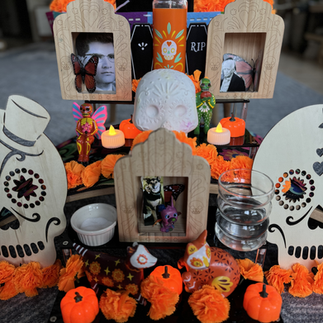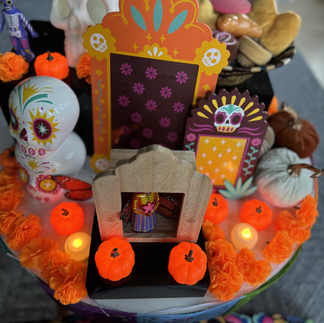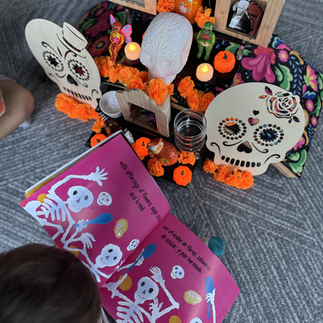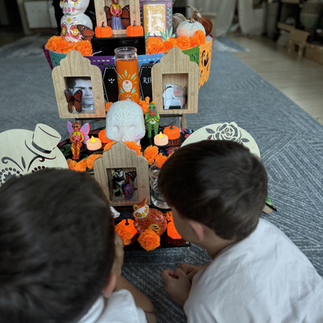In Mexico & other Latin American countries, Día de los Muertos (November 1-2) is a time to celebrate & honor loved ones who have passed on. It is believed that during this holiday the deceased are able to visit friends and relatives on earth & once again enjoy the things they did in life, such as food, music, & drinks. Día de los Muertos is such a beautiful & lively celebration filled with color, music, & joy that children love to learn about.

The ofrenda (altar) is perhaps the most recognized aspect of Día de los Muertos. It is a dedicated space used to remember & honor the dead. It is a reminder that life is eternal & that the presence of the deceased loved one is everlasting. The ofrendas speak of affection toward the deceased & are an expression of love towards life. Traditionally, the altars are placed on a table with a decorative table cloth that has several layers, decorated with key elements representing heaven & earth, while all being customized to a family's likings with the following items:
Photos of friends & family-to help loved ones to remember them while they were in the prime of their lives.
Candles + incense- Each soul is represented by a lit candle, extra ones are placed for the forgotten soul. The incense burn guides the souls through its aroma Both are elements that help spirits return.
Water- Placed in a container for the souls to quench their thirst after its long journey to reach the altar.
Salt – Represents purification.
Cempasúchil, or marigolds- The bright color & strong scent of cempasúchil is believed to make it easier for deceased loved ones to find their way back to you.
Sweets & loved ones' favorite foods- Offerings to the dead.
Decorations, such as skulls (death), papel picado (wind), flowers (earth)- represent the cycle of life & death.
Butterflies– Symbolic icons representing the belief in some areas that when the deceased leaves this world and passes to eternal life in the early morning, their soul returns to earth as a butterfly to visit their loved ones.
Setting up an ofrenda to let the child(ren) explore the offerings and continuously reading stories such as Día de los Muertos (Celebrate the World) & The Day of the Dead: A Bilingual Celebration are great books that honor the celebration & cultures + establishing an inclusive environment where every child feels seen, heard, & celebrated or introducing something a child may never have experienced. The more we learn about all cultures in classrooms or in our homes, the more knowledge, respect, and understanding we provide for everyone within our communities.

















































Comments